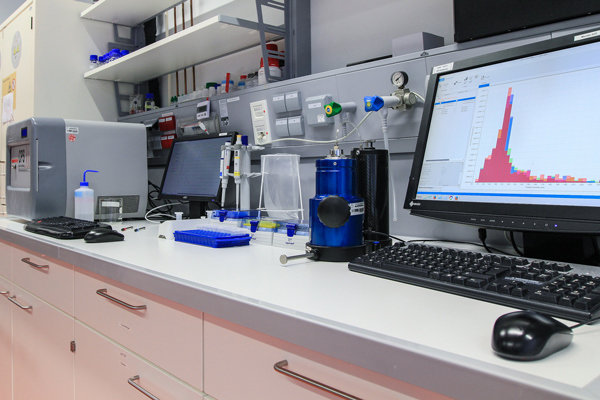
Macromolecules in Bioprocess Engineering
Motivation
Macromolecular components play an important role in bioprocesses, where they are frequently the desired end-product, e.g. virus particles, viral vectors, virus like particles (VLPs), phages, or other large compounds.
Composition as well as chemical and physical properties of biological macromolecular structures are often not fully known. However, they have a major impact on the process outcome and product characteristics. Hence, without detailed understanding of process components and their interactions efficient process design and optimizations is nearly impossible.
![Fig. 1. Virus particle size distributions produced in mammalian adherent and suspension cultures at varying low salt concentrations [1,2].](/3378430/original-1541161425.jpg?t=eyJ3aWR0aCI6MjQ2LCJvYmpfaWQiOjMzNzg0MzB9--e3234c1813a596b623d3bbd533be2de431f8c972)
Aim of the project
The primary goal of the project is to investigate size distributions and aggregation behavior of virus particles during the downstream processing (DSP) of bioreactor harvests for manufacturing of human and veterinary vaccines. Several different complementary nanoparticle measurement methods will be used for the analysis, e.g. differential centrifugation sedimentation (DCS) [3], tunable resistive pulse sensing (TRPS) [4], and others. Based on the results obtained, the established DSP trains will be optimized to improve yields and product characteristics.
![Fig. 1. Virus particle size distributions produced in mammalian adherent and suspension cultures at varying low salt concentrations [1,2].
Fig. 1. Virus particle size distributions produced in mammalian adherent and suspension cultures at varying low salt concentrations [1,2].](/3378430/original-1541161425.jpg?t=eyJ3aWR0aCI6MzQxLCJmaWxlX2V4dGVuc2lvbiI6ImpwZyIsIm9ial9pZCI6MzM3ODQzMH0%3D--163bcc9075d5aa0052b4c01c36da5dfaa2b0b8e4)